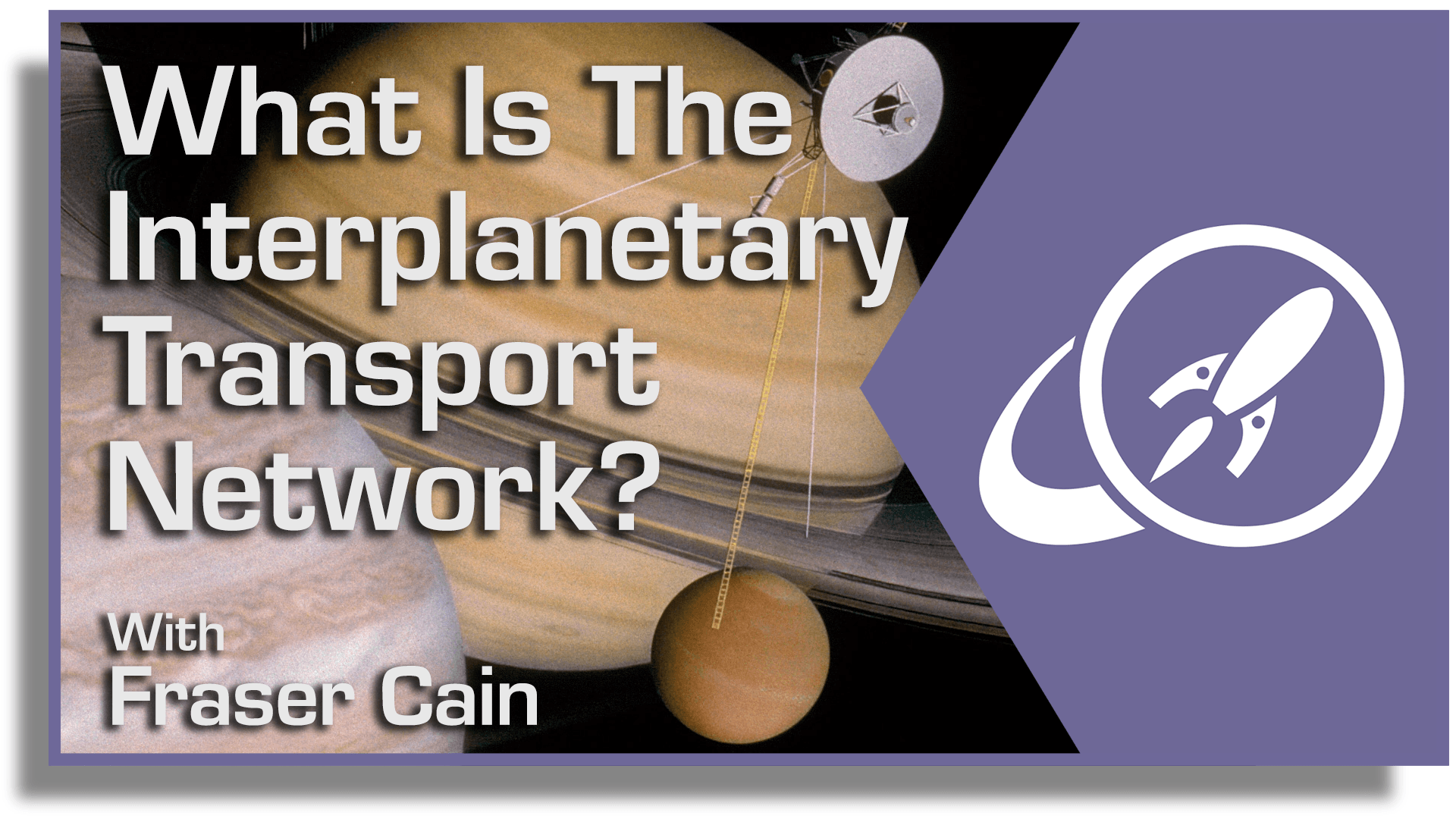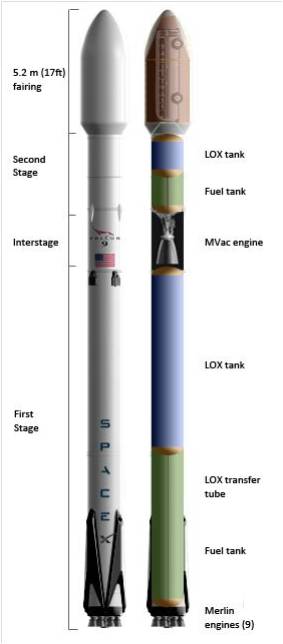After months of discussion, the space agencies behind the Lunar Gateway have decided how the space station will orbit the Moon. NASA and the ESA are developing the Lunar Gateway jointly, and the orbital path that it will follow around the Moon is a key part of mission design. It’ll affect all the vital aspects of the mission, including how spacecraft will rendezvous and land at the station.
Continue reading “The Lunar Gateway Will be in a “Near-Rectilinear Halo Orbit””Soyuz Launch Carrying Two Astronauts is Forced to Abort, Landing Safely Back on Earth
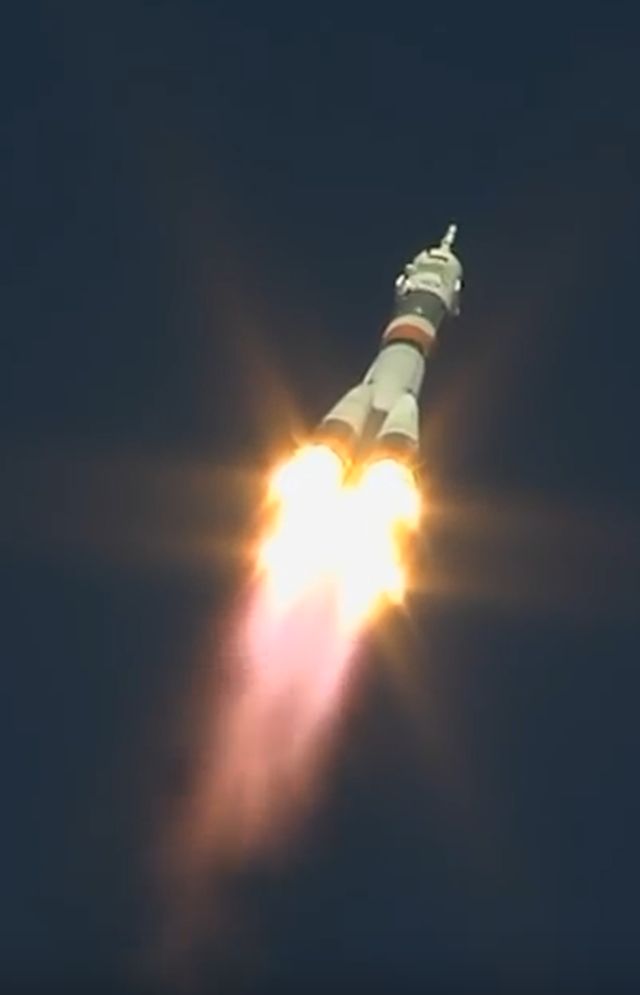
The Soyuz MS-10 spacecraft carrying crew to the ISS was aborted shortly after launch on Thursday, Oct. 11th when its booster failed. The spacecraft executed an emergency ballistic landing with a sharp angle of descent. Both crew members on board—American astronaut Nick Hague and Russian cosmonaut Alexey Ovchinin—exited the capsule safely and are in good condition.
2 US Astronauts Conduct Unplanned, Rapidly Executed Contingency Space Walk on Space Station


In the space of just 3 days, a pair of NASA astronauts conducted an unplanned and rapidly executed contingency space walk on the exterior of the space station on Tuesday, May 23 in order to replace a critical computer unit that failed over the weekend.
The spacewalk was conducted by Expedition 51 Commander Peggy Whitson – NASA’s most experienced astronaut – and Flight Engineer Jack Fischer aboard the International Space Station (ISS).
This marked the 10th spacewalk for Whitson – who already has the most cumulative spacewalk time by a female and the most time in space by a NASA astronaut. This was Fischer’s second spacewalk.
Furthermore Whitson now moves into third place all-time for cumulative spacewalking time totaling 60 hours, 21 minutes. Only Russia’s Anatoly Solovyev and NASA’s Michael Lopez-Alegria have more spacewalking time to their credit.

NASA managers ordered the spacewalk over the weekend when a computer unit known as multiplexer-demultiplexer-1 (MDM-1) unexpectedly failed Saturday morning, May 20 at 1:13 p.m. Central time.
The cause of the MDM failure is not known, says NASA. Multiple attempts by NASA flight controllers to restore power to the MDM-1 relay box were not successful.
The US dynamic duo successfully changed out the MDM computer relay box with a spare unit on board the station. They also installed a pair of antennas on the station on the U.S. Destiny Laboratory module to enhance wireless communication for future spacewalks.
The MDM functions as a data relay box and is located on the S0 truss on the exterior of the US segment of the ISS, thereby necessitating a spacewalk by astronaut crew members.
After NASA engineers thoroughly assessed the situation and reviewed spacewalk procedures on Sunday, May 21, they gave the go ahead for Whitson and Fischer to carry out the hurriedly arranged extravehicular activity (EVA) spacewalk on Tuesday.
Meanwhile, Whitson worked on Sunday to prepare the spare data relay box and test its components to ensure it was ready for Tuesdays swap out of the failed unit.
“The relay box, known as a multiplexer-demultiplexer (MDM), is one of two units that regulate the operation of radiators, solar arrays and cooling loops.” says NASA.
“Because each MDM is capable of performing the critical station functions, the crew on the station was never in danger and station operations have not been affected.”
The two MDM’s housed in the truss are fully redundant systems.
“The other MDM in the truss is functioning perfectly, providing uninterrupted telemetry routing to the station’s systems.”
The spacewalk began Tuesday morning, May 23 at 7:20 a.m. EDT when the two NASA astronauts switched their spacesuits to battery power.
While Whitson focused on the MDM swap, Fischer worked on the antenna installation.
The unplanned spacewalk marks the second this month by Whitson and Fischer. The first was on May 12 and the 200th overall. The Destiny module antenna installation was deferred from the May 12 spacewalk.
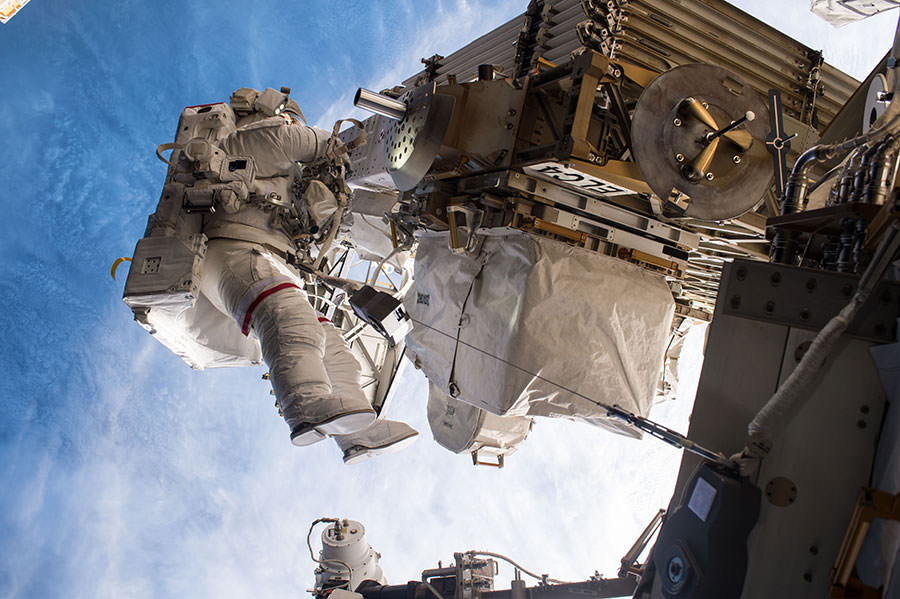
The relatively short EVA lasted a total of two hours and 46 minutes. It concluded at 10:06 a.m. EDT.
Overall this was the 201st spacewalk in support of the space station assembly, maintenance and upgrade. Spacewalkers have now spent a total of 1,250 hours and 41 minutes working outside the orbiting lab complex since its inception.
Spacewalk 201 was also the sixth spacewalk conducted from the Quest airlock in 2017 aboard the ISS.
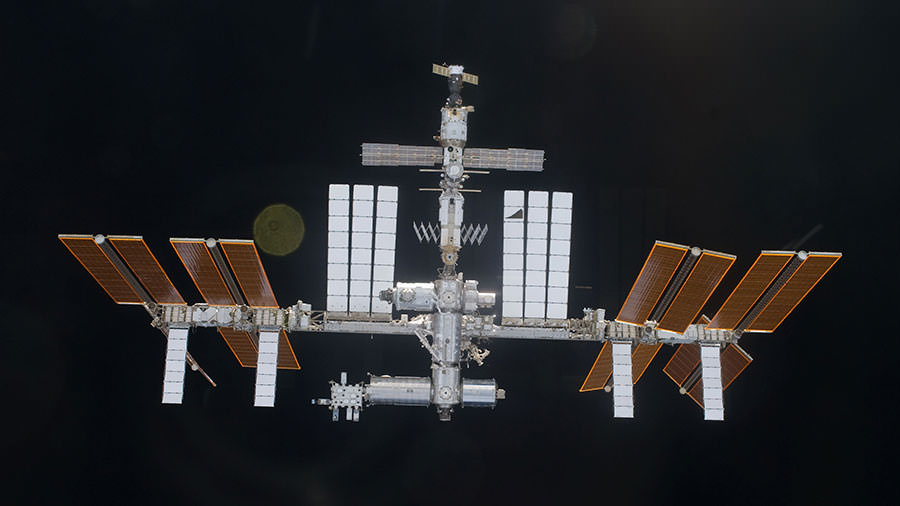
Stay tuned here for Ken’s continuing Earth and Planetary science and human spaceflight news.
Preleminary Results In NASA Twins Study Released
In 1996, something remarkable happened at NASA. Twin brothers Mark and Scott Kelly were accepted into NASA; Mark as a shuttle pilot, and Scott into technical operations on the ground, at least initially. Eventually, both brothers became astronauts. They are the only siblings to have both been in space.
Whether it was intentional or not, having twin brothers gave NASA an important opportunity. They could use one twin as a control group, and send the other on a prolonged mission into space. That allowed NASA to carry out important research on the effects of space travel on the human body.
In March 2016, Scott Kelly returned from a year long (340 days) mission aboard the International Space Station, while his brother Mark stayed on Earth. Genetic samples were taken from each brother before and after Scott’s time aboard the ISS. Now, NASA has released the preliminary results of this unprecedented opportunity.
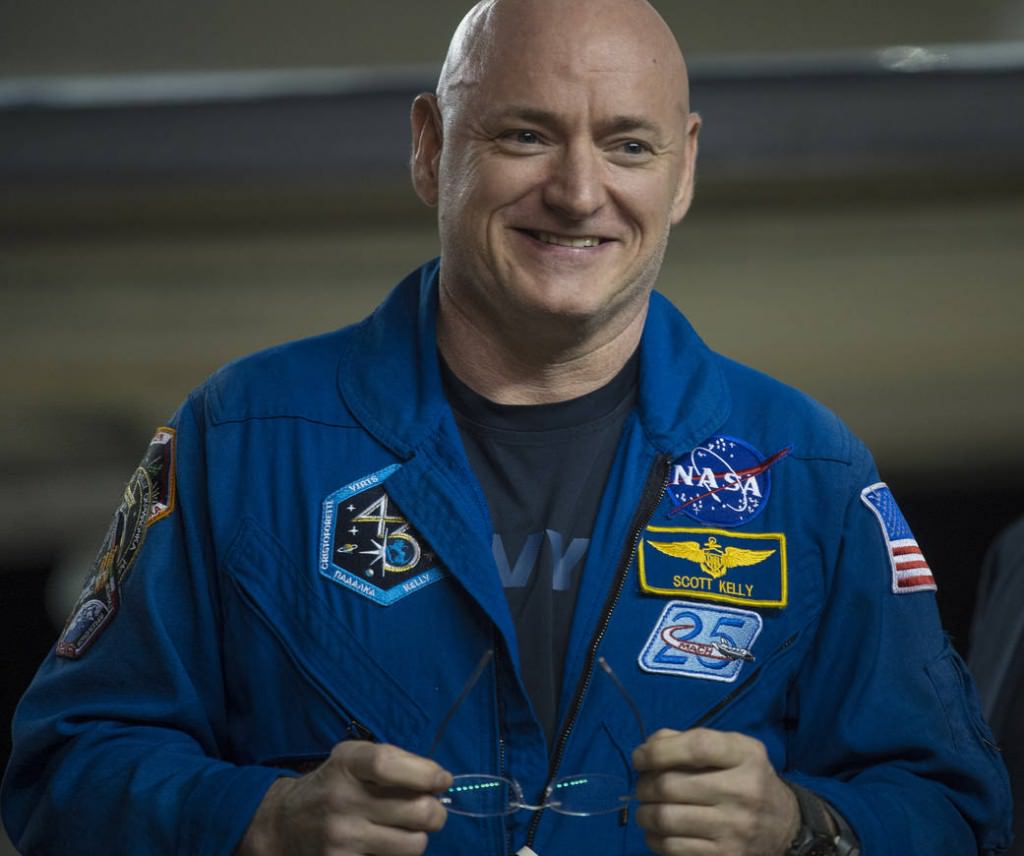
NASA’s Human Research Program did the study, and the results were released at their Investigator’s Workshop on the week of January 23rd. The theme of that workshop was A New Dawn: Enabling Human Space Exploration. Though the studies are on-going, these initial results are interesting.
Omics
Mike Snyder, who is the Integrated Omics investigator, reported his findings. He found an altered level of lipids in Scott, the flight twin, which indicates inflammation. He also found increased 3-indolepropionic (IPA) in Mark, the ground twin. IPA is a potential brain antioxidant therapeutic, and also helps maintain normal insulin levels, to stabilize blood sugar after meals.
Telomeres and Telomerase
Telomeres and Telomerase are part of the chromosomal system in the human body. Susan Bailey reported that for Scott, the flight twin, the length of his white blood cell’s telomeres increased while in space. Typically, they decrease as a person ages. Once on Earth, they began to shorten again.
Telomerase, an enzyme that repairs telomeres, increased in both brothers in November, which could be related to a stressful family event at that time.
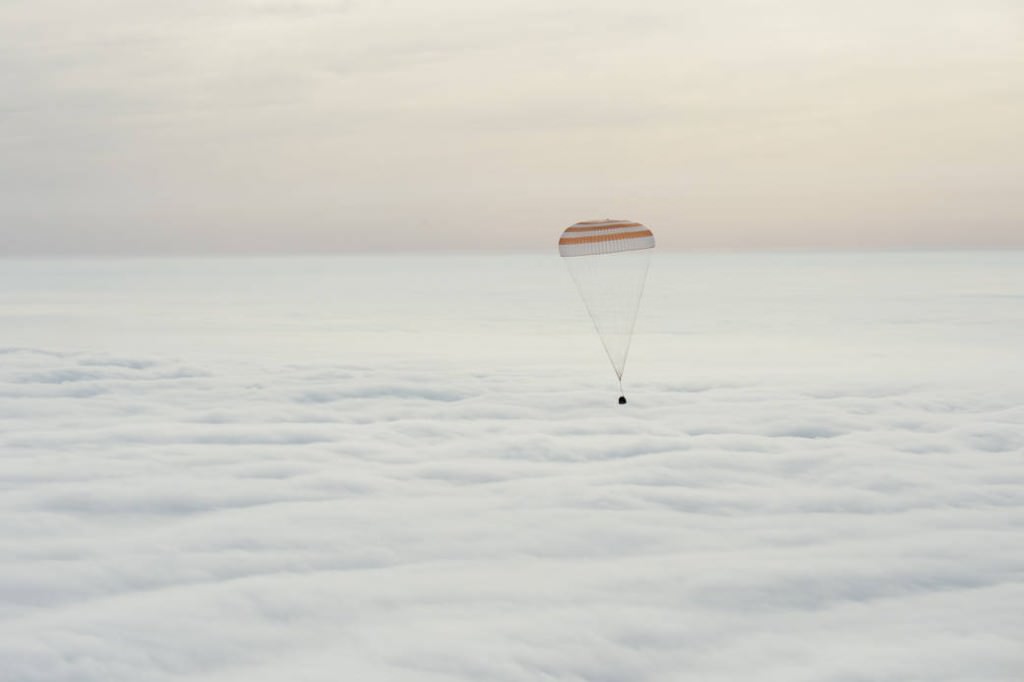
Cognitive Performance in Spaceflight
Mathias Basner is studying Cognitive Performance in Spaceflight, especially the difference in cognition between a 12-month mission and a six-month mission. Though he found a slight decrease in speed and accuracy after the mission, he found no real difference in cognition between 6 month and 12 month missions.
Biochemistry
Scott Smith’s investigation into biochemistry showed a decrease in bone density during the second half of Scott’s mission. Scott also had increased levels of a biochemical marker for inflammation once he returned to Earth.
Microbiome in the Gastro-Intestinal Tract
Fred Turek reported preliminary results of his investigation into the bacteria in the GI (microbiome) tract that help digestion. There were many differences in the twins’ biomes, but that was expected because of their different diets and environments. There were interesting differences in Scott’s biome between his time in space and his time on the ground. The ratio between two dominant bacterial groups shifted during his flight time compared to his ground time.
Immunome Studies
Emmanuel Mignot investigated changes in the bodies of both twins before and after a flu vaccine was given. Both twins showed increased levels of T-cell receptors after the vaccine, which was the expected immune response.
Genome Sequencing
Chris Mason is performing Genome Sequencing on the DNA and RNA contained within the twins’ white blood cells with his investigation. RNA sequencing showed that over 200,000 RNA molecules were expressed differently between the twins. Mason will look closer to see if a “space gene” could have been activated while Scott was in space.
Epigenomics
Andy Feinberg studies how the environment regulates our gene expression, which is known as epigenomics. Scott’s white blood cell DNA showed decreased levels of chemical modification while in flight, and a return to normal once back on Earth. The same level in Mark (the ground twin) increased midway through the study, but then returned to normal. There was variability between the twins, called epigenetic noise. This noise was higher in Scott during his spaceflight, and returned to baseline levels once back on Earth. This could indicate that some genes are more sensitive to the changing environment of spaceflight than others.
There’s a lot more research required to truly understand these results. Once they’re looked at in coordination with other physiological, psychological, and technological investigations, the picture will become clearer. Later in 2017, there will be a joint publication of further results, as well as individual research papers.
NASA’s goal is to make space travel safer for astronauts, and to make missions more effective and efficient. With all the talk of missions to Mars in the next decade, these results are arriving at the perfect time.
What Is The Interplanetary Transport Network?
It was with great fanfare that Elon Musk announced SpaceX’s plans to colonize Mars with the Interplanetary Transport System.
I really wish they’d stuck to their original name, the BFR, the Big Fabulous Rocket, or something like that.
The problem is that Interplanetary Transport System is way too close a name to another really cool idea, the Interplanetary Transport Network, which gives you an almost energy free way to travel across the entire Solar System. Assuming you’re not in any kind of rush.
When you imagine rockets blasting off for distant destinations, you probably envision pointing your rocket at your destination, firing the thrusters until you get there. Maybe turning around and slowing down again to land on the alien world. It’s how you might drive your car, or fly a plane to get from here to there.
But if you’ve played any Kerbal Space Program, you know that’s not how it works in space. Instead, it’s all about orbits and velocity. In order to get off planet Earth, you have be travelling about 8 km/s or 28,000 km/h sideways.
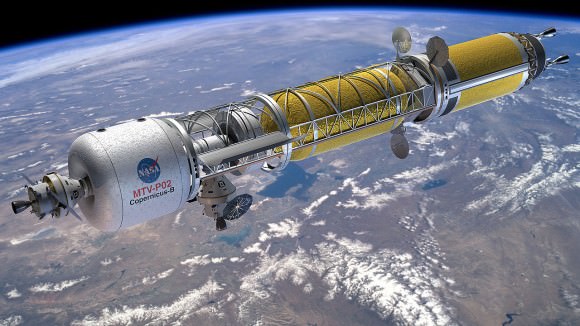
So now, you’re orbiting the Earth, which is orbiting the Sun. If you want to get to Mars, you have raise your orbit so that it matches Mars. The absolute minimum energy needed to make that transfer is known as the Hohmann transfer orbit. To get to Mars, you need to fire your thrusters until you’re going about 11.3 km/s.
Then you escape the pull of Earth, follow a nice curved trajectory, and intercept the trajectory of Mars. Assuming you timed everything right, that means you intercept Mars and go into orbit, or land on its surface, or discover a portal to hell dug into a research station on Phobos.
If you want to expend more energy, go ahead, you’ll get there faster.
But it turns out there’s another way you can travel from planet to planet in the Solar System, using a fraction of the energy you would use with the traditional Hohmann transfer, and that’s using Lagrange points.
We did a whole article on Lagrange points, but here’s a quick refresher. The Lagrange points are places in the Solar System where the gravity between two objects balances out in five places. There are five Lagrange points relating to the Earth and the Sun, and there are five Lagrange points relating to the Earth and the Moon. And there are points between the Sun and Jupiter, etc.
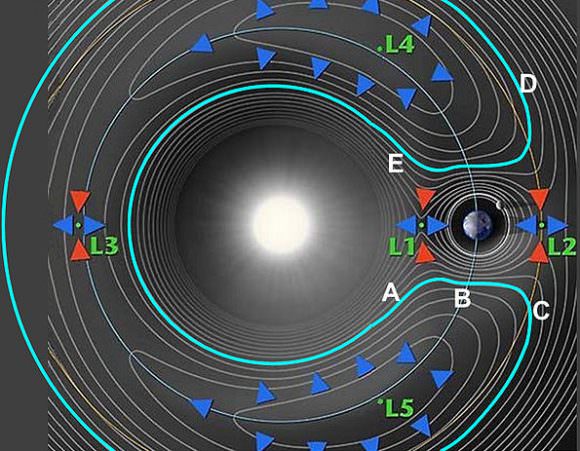
Three of these points are unstable. Imagine a boulder at the top of a mountain. It doesn’t take much energy to keep it in place, but it’s easy to knock it out of balance so it comes rolling down.
Now, imagine the whole Solar System with all these Lagrange points for all the objects gravitationally interacting with each other. As planets go around the Sun, these Lagrange points get close to each other and even overlap.
And if you time things right, you can ride along in one gravitationally balanced point, and the roll down the gravity hill into the grasp of a different planet. Hang out there for a little bit and then jump orbits to another planet.
In fact, you can use this technique to traverse the entire Solar System, from Mercury to Pluto and beyond, relying only on the interacting gravity of all these worlds to provide you with the velocity you need to make the journey.
Welcome to the Interplanetary Transport Network, or Interplanetary Superhighway.
Unlike a normal highway, though, the actual shape and direction these pathways take changes all the time, depending on the current configuration of the Solar System.
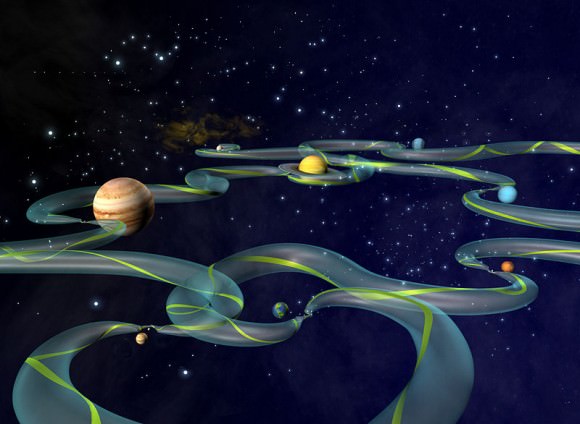
If you think this sounds like science fiction, you’ll be glad to hear that space agencies have already used a version of this network to get some serious science done.
NASA greatly extended the mission of the International Sun/Earth Explorer 3, using these low energy transfers, it was able to perform its primary mission and then investigate a couple of comets.
The Japanese Hiten spacecraft was supposed to travel to the Moon, but its rocket failed to get enough velocity to put it into the right orbit. Researchers at NASA’s Jet Propulsion Laboratory calculated a trajectory that used the Lagrange points to help it move slowly and get to the Moon any way.
NASA’s Genesis Mission used the technique to capture particles from the solar wind and bring them back to the Earth.
There have been other missions to use the technique, and missions have been proposed that might exploit this technique to fully explore all the moons of Jupiter or Saturn, for example. Traveling from moon to moon when the gravity points line up.
It all sounds too good to be true, so here’s the downside. It’s slow. Really, painfully slow.
Like it can take years and even decades to move from world to world.
Imagine in the far future, there are space stations positioned at the major Lagrange points around the planets in the Solar System. Maybe they’re giant rotating space stations, like in 2001, or maybe they’re hollowed out asteroids or comets which have been maneuvered into place.

They hang out at the Lagrange points using minimal fuel for station keeping. If you want to travel from one planet to another, you dock your spacecraft at the space station, refuel, and then wait for one of these low-energy trajectories to open up.
Then you just kick away from the Lagrange point, fall into the gravity well of your destination, and you’re on your way.
In the far future, we could have space stations at all the Lagrange points, and slow ferries that move from world to world along low energy trajectories, bringing cargo from world to world. Or taking passengers who can’t afford the high velocity Hohmann transfer technique.
You could imagine the space stations equipped with powerful lasers that fill your ship’s solar sails with the photons it needs to take you to the next destination. But then, I’m a sailor, so maybe I’m overly romanticizing it.
Here’s another, even more mind-bending concept. Astronomers have observed these networks open up between interacting galaxies. Want to transfer from the Milky Way to Andromeda? Just get your spacecraft to the galactic Lagrange point in a few billion years as they pass through each other. With very little energy, you’ll be able to join the cool kids in Andromeda.
I love this idea that colonizing and traveling across the Solar System doesn’t actually need to take enormous amounts of energy. If you’re patient, you can just ride the gravitational currents from world to world. This might be one of the greatest gifts the Solar System has made available to us.
Big Breach In 2nd Stage Helium System Likely Triggered Catastrophic Falcon 9 Explosion: SpaceX


Investigators have determined that a “large breach” in the second stage helium system likely triggered the catastrophic Falcon 9 launch pad explosion that suddenly destroyed the rocket and Israeli commercial payload during a routine fueling test three weeks ago, SpaceX announced today, Friday, Sept. 23.
However, the root cause of the rupture and Sept. 1 disaster have not been determined, according to SpaceX, based on the results thus far discerned by the official accident investigation team probing the incident that forced an immediate halt to all SpaceX launches.
The Accident Investigation Team (AIT) is composed of SpaceX, the FAA, NASA, the U.S. Air Force, and industry experts.
“At this stage of the investigation, preliminary review of the data and debris suggests that a large breach in the cryogenic helium system of the second stage liquid oxygen tank took place,” SpaceX reported on the firm’s website in today’s anomaly update dated Sept. 23- the first in three weeks.
The helium system is used to pressurize the liquid oxygen tank from inside.
The explosion took place without warning at SpaceX’s Space Launch Complex-40 launch facility at approximately 9:07 a.m. EDT on Sept. 1 on Cape Canaveral Air Force Station, Fl, during a routine fueling test and engine firing test as liquid oxygen and RP-1 propellants were being loade into the 229-foot-tall (70-meter) Falcon 9. Launch of the AMOS-6 comsat was scheduled two days later.
Indeed the time between the first indication of an anomaly to loss of signal was vanishingly short – only about “93 milliseconds” of elapsed time, SpaceX reported.
93 milliseconds amounts to less than 1/10th of a second. That conclusion is based on examining 3,000 channels of data.
SpaceX reported that investigators “are currently scouring through approximately 3,000 channels of engineering data along with video, audio and imagery.”

Both the $60 million SpaceX rocket and the $200 million AMOS-6 Israeli commercial communications satellite payload were completely destroyed in a massive fireball that erupted suddenly during the planned pre-launch fueling and hot fire engine ignition test at pad 40. There were no injuries since the pad had been cleared.
The Sept. 1 calamity also counts as the second time a Falcon 9 has exploded in 15 months and the second time it originated in the second stage and will call into question the rocket’s reliability.
The first failure involved a catastrophic mid air explosion about two and a half minutes after liftoff, when a strut holding the helium tank inside the liquid oxygen tank failed in flight during the Dragon CRS-7 cargo resupply launch for NASA to the International Space Station on June 28, 2015 – and witnessed by this author.
However SpaceX says that although both incidents involved the second stage, they are unrelated – even as they continue seeking to determine the root cause.
“All plausible causes are being tracked in an extensive fault tree and carefully investigated. Through the fault tree and data review process, we have exonerated any connection with last year’s CRS-7 mishap.”
And they are thoroughly reviewing all rocket components.
“At SpaceX headquarters in Hawthorne, CA, our manufacturing and production is continuing in a methodical manner, with teams continuing to build engines, tanks, and other systems as they are exonerated from the investigation.”
But SpaceX will have to conduct an even more thorough analysis of every aspect of their designs and manufacturing processes and supply chain exactly because the cause of this disaster is different and apparently went undetected during the CRS-7 accident review.
And before Falcon 9 launches are allowed to resume, the root cause must be determined, effective fixes must be identified and effective remedies must be verified and implemented.
Large scale redesign of the second stage helium system may be warranted since two independent failure modes have occurred. Others could potentially be lurking. It’s the job of the AIT to find out – especially because American astronauts will be flying atop this rocket to the ISS starting in 2017 or 2018 and their lives depend on its being reliable and robust.
After the last failure in June 2015, it took nearly six months before Falcon 9 launches were resumed.
Launches were able to recommence relatively quickly because the June 2015 disaster took place at altitude and there was no damage to pad 40.
That’s not the case with the Sept. 1 calamity where pad 40 suffered significant damage and will be out of action for quite a few months at least as the damage is catalogued and evaluated. Then a repair, refurbishment, testing and recertification plan needs to be completed to rebuild and return pad 40 to flight status. Furthermore SpaceX will have to manufacture a new transporter-erector.
Since the explosion showered debris over a wide area, searchers have been prowling surrounding areas and other nearby pads at the Cape and Kennedy Space Center, hunting for evidentiary remains that could provide clues or answers to the mystery of what’s at the root cause this time.
Searchers have recovered “the majority of debris from the incident has been recovered, photographed, labeled and catalogued, and is now in a hangar for inspection and use during the investigation.”
To date they have not found any evidence for debris beyond the immediate area of LC-40, the company said.
SpaceX CEO Elon Musk had previously reported via twitter that the rocket failure originated somewhere in the upper stage near the liquid oxygen (LOX) tank during fueling test operations at the launch pad, for what is known as a hot fire engine ignition test of all nine first stage Merlin 1D engines.
Engineers were in the final stages of loading the liquid oxygen (LOX) and RP-1 kerosene propellants that power the Falcon 9 first stage for the static fire test which is a full launch dress rehearsal. The anomaly took place about 8 minutes before the planned engine hot fire ignition.
And the incident took place less than two days before the scheduled Falcon 9 launch of AMOS-6 on Sept. 3 from pad 40.
The explosion also caused extensive damage to the launch pad as well as to the rockets transporter erector, or strongback, that holds the rocket in place until minutes before liftoff, and ground support equipment (GSE) around the pad – as seen in my recent photos of the pad taken a week after the explosion during the OSIRIS-REx launch campaign.
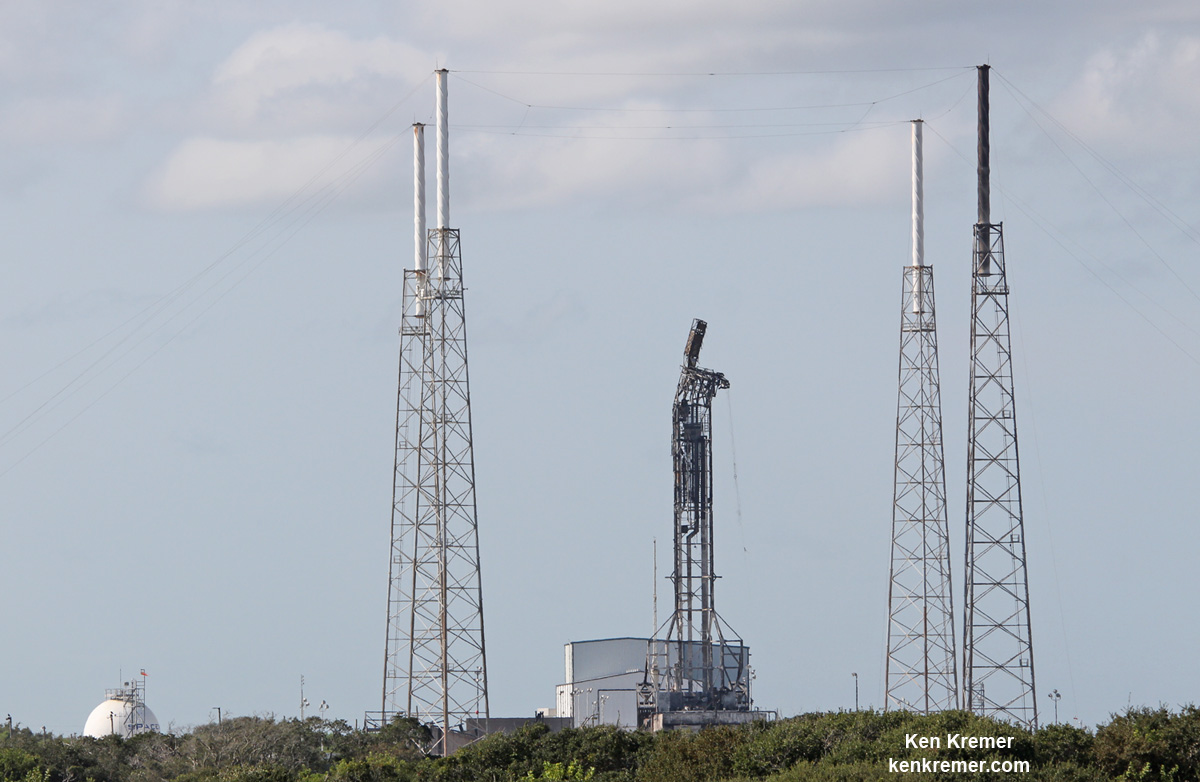
Fortunately, many other pad areas and infrastructure survived intact or in “good condition.”
“While substantial areas of the pad systems were affected, the Falcon Support Building adjacent to the pad was unaffected, and per standard procedure was unoccupied at the time of the anomaly. The new liquid oxygen farm – e.g. the tanks and plumbing that hold our super-chilled liquid oxygen – was unaffected and remains in good working order. The RP-1 (kerosene) fuel farm was also largely unaffected. The pad’s control systems are also in relatively good condition.”
The rocket disaster was coincidentally captured as it unfolded in stunning detail in a spectacular up close video recorded by my space journalist colleague Mike Wagner at USLaunchReport.
Watch this video:
Video Caption: SpaceX – Static Fire Anomaly – AMOS-6 – 09-01-2016. Credit: USLaunchReport
Even as investigators and teams of SpaceX engineers sift through the data and debris looking for the root cause of the helium tank breach, other SpaceX engineering teams and workers prepare to restart launches from the other SpaceX pad on the Florida Space Coast- namely Pad 39A on the Kennedy Space Center.
So the ambitious aerospace firm is already setting its sights on a ‘Return to Flight’ launch as early as November of this year, SpaceX President Gwynne Shotwell said on Sept. 13 at a French space conference.
“We’re anticipating getting back to flight, being down for about three months, so getting back to flight in November, the November timeframe,” Shotwell announced during a panel discussion at the World Satellite Business Week Conference in Paris, France – as reported here last week.
SpaceX reconfirmed the November target today.
“We will work to resume our manifest as quickly as responsible once the cause of the anomaly has been identified by the Accident Investigation Team.”
“Pending the results of the investigation, we anticipate returning to flight as early as the November timeframe.”
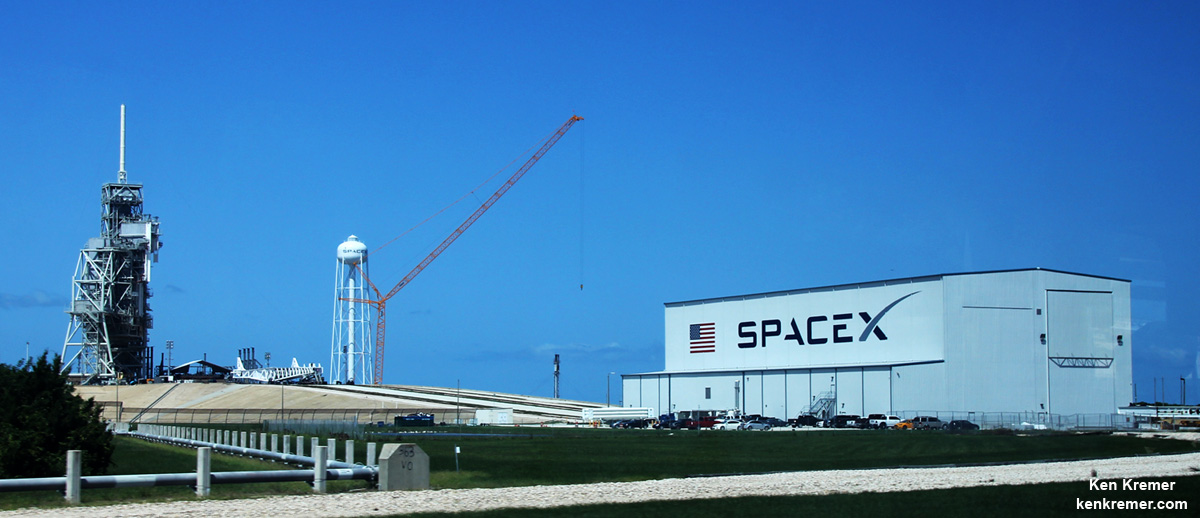
As SpaceX was launching from pad 40, they have been simultaneously renovating and refurbishing NASA’s former shuttle launch pad at Launch Complex 39A at the Kennedy Space Center (KSC) – from which the firm hopes to launch the new Falcon Heavy booster in 2017 as well as human rated launches of the Falcon 9 with the Crew Dragon to the ISS.
So now SpaceX will utilize pad 39A for commercial Falcon 9 launches as well. But much works remains to finish pad work as I recently witnessed.
Stay tuned here for Ken’s continuing Earth and Planetary science and human spaceflight news.
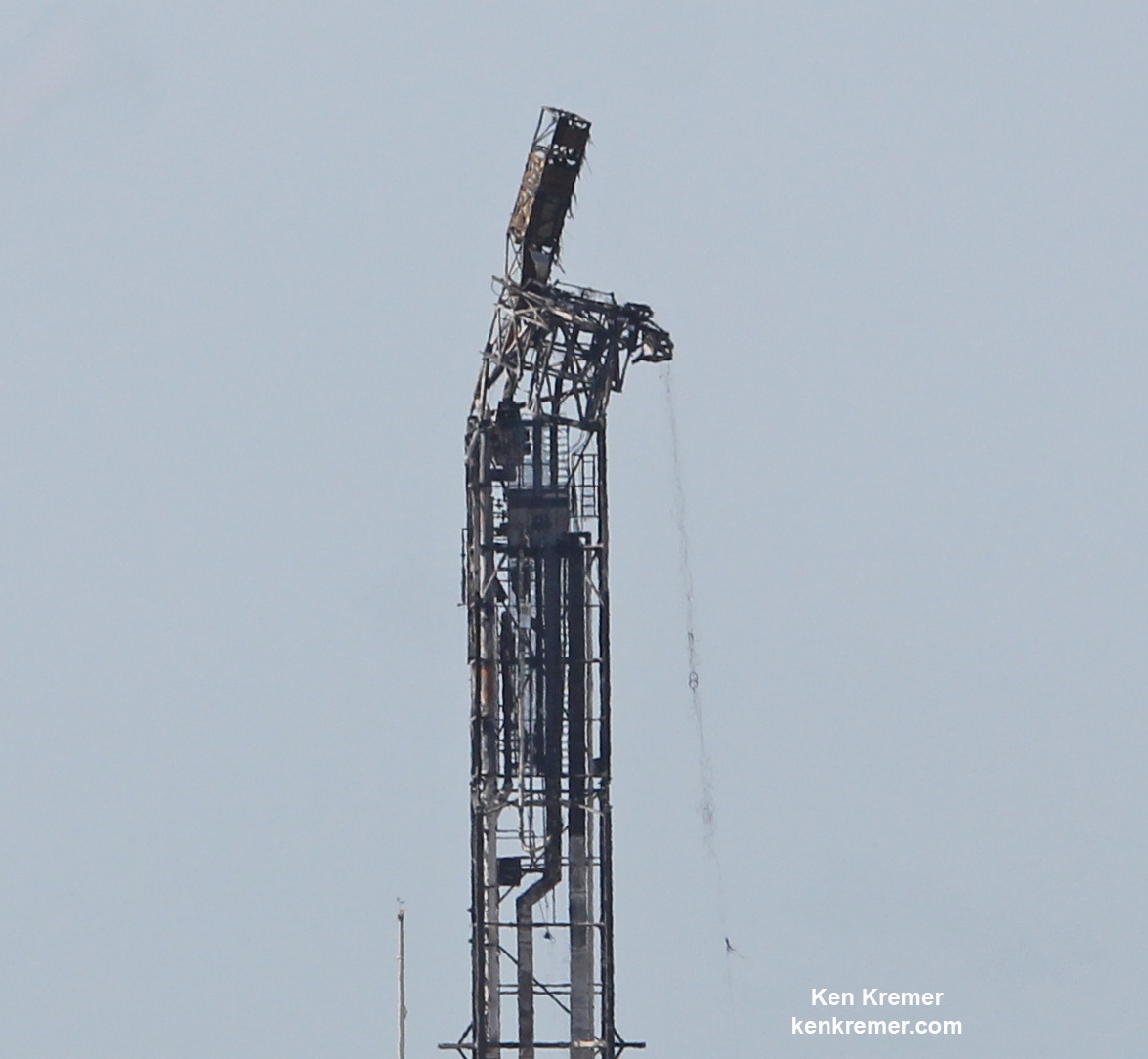
How High is Space?
Look up at the night sky, and what do you see? Space, glittering and gleaming in all its glory. Astronomically speaking, space is really quite close, lingering just on the other side of that thin layer we call an atmosphere. And if you think about it, Earth is little more than a tiny island in a sea of space. So it is quite literally all around us.
By definition, space is defined as being the point at which the Earth’s atmosphere ends, and the vacuum of space begins. But exactly how far away is that? How high do you need to travel before you can actually touch space? As you can probably imagine, with such a subjective definition, people tend to disagree on exactly where space begins.
Definition:
The first official definition of space came from the National Advisory Committee for Aeronautics (the predecessor to NASA), who decided on the point where atmospheric pressure was less than one pound per square foot. This was the altitude that airplane control surfaces could no longer be used, and corresponded to roughly 81 kilometers (50 miles) above the Earth’s surface.
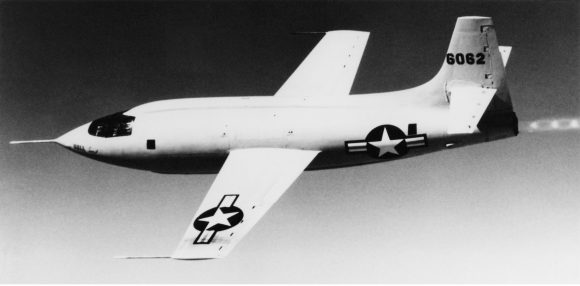
Any NASA test pilot or astronaut who crosses this altitude is awarded their astronaut wings. Shortly after that definition was passed, the aerospace engineer Theodore von Kármán calculated that above an altitude of 100 km, the atmosphere would be so thin that an aircraft would need to be traveling at orbital velocity to derive any lift.
This altitude was later adopted as the Karman Line by the World Air Sports Federation (Fédération Aéronautique Internationale, FAI). And in 2012, when Felix Baumgartner broke the record for the highest freefall, he jumped from an altitude of 39 kilometers (24.23 mi), less than halfway to space (according to NASA’s definition).
By the same token, space is often defined as beginning at the lowest altitude at which satellites can maintain orbits for a reasonable time – which is approximately 160 kilometers (100 miles) above the surface. These varying definitions are complicated when one takes the definition of the word “atmosphere” into account.
Earth’s Atmosphere:
When we talk about Earth’s atmosphere, we tend to think of the region where air pressure is still high enough to cause air resistance, or where the air is simply thick enough to breath. But in truth, Earth’s atmosphere is made up of five main layers – the Troposphere, the Stratosphere, the Mesosphere, the Thermosphere, and the Exosphere – the latter of which extend pretty far out into space.
![Space Shuttle Endeavour sillouetted against the atmosphere. The orange layer is the troposphere, the white layer is the stratosphere and the blue layer the mesosphere.[1] (The shuttle is actually orbiting at an altitude of more than 320 km (200 mi), far above all three layers.) Credit: NASA](https://www.universetoday.com/wp-content/uploads/2012/03/Endeavour_silhouette_STS-130-580x387.jpg)
Hence, this is where the phenomena known as Aurora Borealis and Aurara Australis are known to take place. The International Space Station also orbits in this layer, between 320 and 380 km (200 and 240 mi), and needs to be constantly boosted because friction with the atmosphere still occurs.
The outermost layer, known as the exosphere, extends out to an altitude of 10,000 km (6214 mi) above the planet. This layer is mainly composed of extremely low densities of hydrogen, helium and several heavier molecules (nitrogen, oxygen, CO²). The atoms and molecules are so far apart that the exosphere no longer behaves like a gas and the particles constantly escape into space.
It is here that Earth’s atmosphere truly merges with the emptiness of outer space, where there is no atmosphere. Hence why the majority of Earth’s satellites orbit within this region. Sometimes, the Aurora Borealis and Aurora Australis occur in the lower part of the exosphere, where they overlap into the thermosphere. But beyond that, there is no meteorological phenomena in this region.
Interplanetary vs. Interstellar:
Another important distinction when discussing space is the difference between that which lies between planets (interplanetary space) and that which lies between star systems (interstellar space) in our galaxy. But of course, that’s just the tip of the iceberg when it comes to space.
If one were to cast the net wider, there is also the space which lies between galaxies in the Universe (intergalactic space). In all cases, the definition involves regions where the concentration of matter is significantly lower than in other places – i.e. a region occupied centrally by a planet, star or galaxy.
In addition, in all three definitions, the measurements involved are beyond anything that we humans are accustomed to dealing with on a regular basis. Some scientists believe that space extends infinitely in all directions, while others believe that space is finite, but is unbounded and continuous (i.e. has no beginning and end).
In other words, there’s a reason they call it space – there’s just so much of it!
Exploration:
The exploration of space (that is to say, that which lies immediately beyond Earth’s atmosphere) began in earnest with what is known as the “Space Age“, This newfound age of exploration began with the United States and Soviet Union setting their sights on placing satellites and crewed modules into orbit.
The first major event of the Space Age took place on October 4th, 1957, with the launch of Sputnik 1 by the Soviet Union – the first artificial satellite to be launched into orbit. In response, then-President Dwight D. Eisenhower signed the National Aeronautics and Space Act on July 29th, 1958, officially establishing NASA.
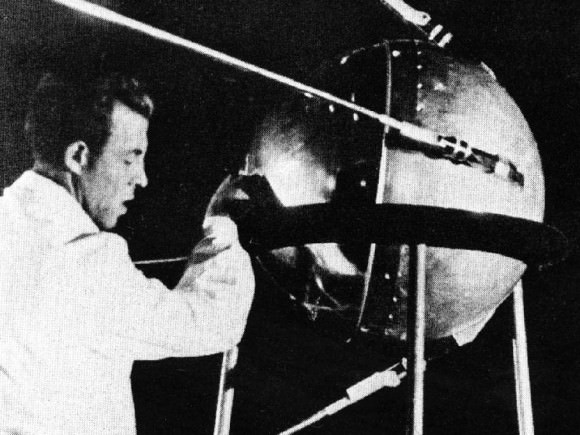
Immediately, NASA and the Soviet space program began taking the necessary steps towards creating manned spacecraft. By 1959, this competition resulted in the creation of the Soviet Vostok program and NASA’s Project Mercury. In the case of Vostok, this consisted of developing a space capsule that could be launched aboard an expendable carrier rocket.
Along with numerous unmanned tests, and a few using dogs, six Soviet pilots were selected by 1960 to be the first men to go into space. On April 12th, 1961, Soviet cosmonaut Yuri Gagarin was launched aboard the Vostok 1 spacecraft from the Baikonur Cosmodrome, and thus became the fist man to go into space (beating American Alan Shepard by just a few weeks).
On June 16th, 1963, Valentina Tereshkova was sent into orbit aboard the Vostok 6 craft (which was the final Vostok mission), and thus became the first woman to go into space. Meanwhile, NASA took over Project Mercury from the US Air Force and began developing their own crewed mission concept.

Designed to send a man into space using existing rockets, the program quickly adopted the concept of launching ballistic capsules into orbit. The first seven astronauts, nicknamed the “Mercury Seven“, were selected from from the Navy, Air Force and Marine test pilot programs.
On May 5th, 1961, astronaut Alan Shepard became the first American in space aboard the Freedom 7 mission. Then, on February 20th, 1962, astronaut John Glenn became the first American to be launched into orbit by an Atlas launch vehicle as part of Friendship 7. Glenn completed three orbits of planet Earth, and three more orbital flights were made, culminating in L. Gordon Cooper’s 22-orbit flight aboard Faith 7, which flew on May 15th and 16th, 1963.
In the ensuing decades, both NASA and Soviets began to develop more complex, long-range crewed spacecraft. Once the “Race to the Moon” ended with the successful landing of Apollo 11 (followed by several more Apollo missions), the focus began to shift to establishing a permanent presence in space.
For the Russians, this led to the continued development of space station technology as part of the Salyut program. Between 1972 and 1991, they attempted to orbit seven separate stations. However, technical failures and a failure in one rocket’s second stage boosters caused the first three attempts after Salyut 1 to fail or result in the station’s orbits decaying after a short period.
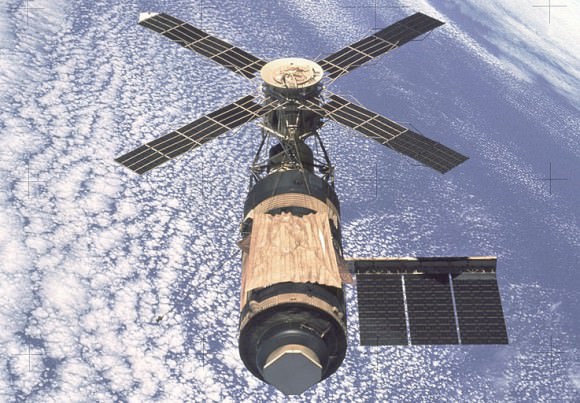
However, by 1974, the Russians managed to successfully deploy Salyut 4, followed by three more stations that would remain in orbit for periods of between one and nine years. While all of the Salyuts were presented to the public as non-military scientific laboratories, some of them were actually covers for the military Almaz reconnaissance stations.
NASA also pursued the development of space station technology, which culminated in May of 1973 with the launch of Skylab, which would remain America’s first and only independently-built space station. During deployment, Skylab suffered severe damage, losing its thermal protection and one of its solar panels.
This required the first crew to rendezvous with the station and conduct repairs. Two more crews followed, and the station was occupied for a total of 171 days during its history of service. This ended in 1979 with the downing of the station over the Indian Ocean and parts of southern Australia.
By 1986, the Soviets once again took the lead in the creation of space stations with the deployment of Mir. Authorized in February 1976 by a government decree, the station was originally intended to be an improved model of the Salyut space stations. In time, it evolved into a station consisting of multiple modules and several ports for crewed Soyuz spacecraft and Progress cargo spaceships.
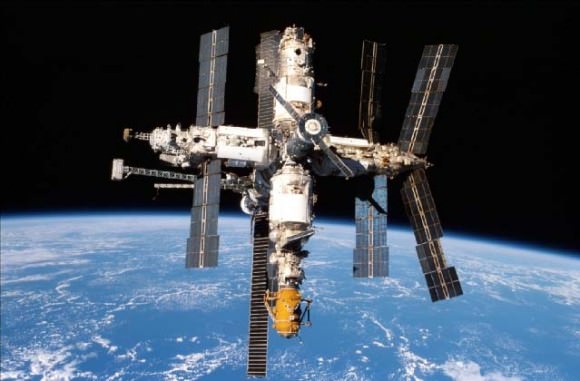
The core module was launched into orbit on February 19th, 1986; and between 1987 and 1996, all of the other modules would be deployed and attached. During its 15-years of service, Mir was visited by a total of 28 long-duration crews. Through a series of collaborative programs with other nations, the station would also be visited by crews from other Eastern Bloc nations, the European Space Agency (ESA), and NASA.
After a series of technical and structural problems caught up with the station, the Russian government announced in 2000 that it would decommission the space station. This began on Jan. 24th, 2001, when a Russian Progress cargo ship docked with the station and pushed it out of orbit. The station then entered the atmosphere and crashed into the South Pacific.
By 1993, NASA began collaborating with the Russians, the ESA and the Japan Aerospace Exploration Agency (JAXA) to create the International Space Station (ISS). Combining NASA’s Space Station Freedom project with the Soviet/Russian Mir-2 station, the European Columbus station, and the Japanese Kibo laboratory module, the project also built on the Russian-American Shuttle-Mir missions (1995-1998).
With the retirement of the Space Shuttle Program in 2011, crew members have been delivered exclusively by Soyuz spacecraft in recent years. Since 2014, cooperation between NASA and Roscosmos has been suspended for most non-ISS activities due to tensions caused by the situation in the Ukraine.
However, in the past few years, indigenous launch capability has been restored to the US thanks to companies like SpaceX, United Launch Alliance, and Blue Origin stepping in to fill the void with their private fleet of rockets.
The ISS has been continuously occupied for the past 15 years, having exceeded the previous record held by Mir; and has been visited by astronauts and cosmonauts from 15 different nations. The ISS program is expected to continue until at least 2020, but may be extended until 2028 or possibly longer, depending on the budget environment.
As you can clearly see, where our atmosphere ends and space begins is the subject of some debate. But thanks to decades of space exploration and launches, we have managed to come up with a working definition. But whatever the exact definition is, if you can get above 100 kilometers, you have definitely earned your astronaut wings!
We have written many interesting articles about space here at Universe Today. Here is Why is Space Black?, How Cold is Space?, Space Debris Illustrated: The Problem in Pictures, What is Interplanetary Space?, What is Interstellar Space?, and What is Intergalactic Space?
For more information, check out NASA Reveals Mysteries of Interstellar Space and this list of Deep Space Missions.
Astronomy Cast has episodes on the subject, like the Space Stations Series, Episode 82: Space Junk, Episode 281: Explosions in Space, Episode 303: Equilibrium in Space, and Episode 311: Sound in Space.
Sources:
What Are The Lagrange Points?
Being stuck here on Earth, at the bottom of this enormous gravity well really sucks. The amount of energy it takes to escape into the black would make even Captain Reynolds curse up a gorram storm.
But gravity has a funny way of evening the score, giving and taking in equal measure.
There are special places in the Universe, where the forces of gravity nicely balance out. Places that a clever and ambitious Solar System spanning civilization could use to get a toehold on the exploration of the Universe.

These are known as the Lagrange Points, or Lagrangian Points, or libration points, or just L-Points. They’re named after the French mathematician Joseph-Louis Lagrange, who wrote an “Essay on the Three Body Problem” in 1772. He was actually extending the mathematics of Leonhard Euler.
Euler discovered the first three Lagrangian Points, even though they’re not named after him, and then Lagrange turned up the next two.
But what are they?
When you consider the gravitational interaction between two massive objects, like the Earth and the Sun, or the Earth and the Moon, or the Death Star and Alderaan. Actually, strike that last example…
As I was saying, when you’ve got two massive objects, their gravitational forces balance out perfectly in 5 places. In each of these 5 places you could position a relatively low mass satellite, and maintain its position with very little effort.
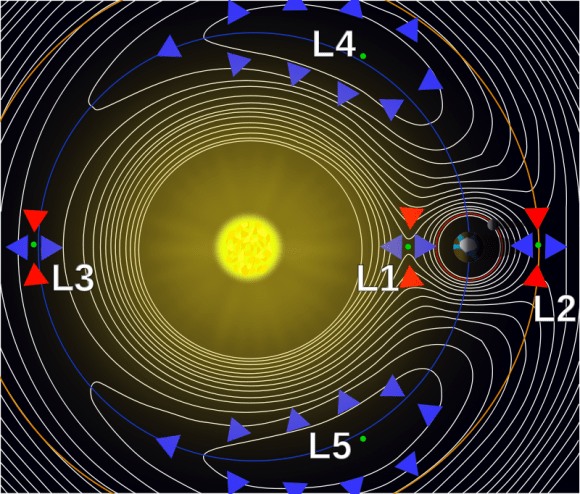
For example, you could park a space telescope or an orbital colony, and you’d need very little, or even zero energy to maintain its position.
The most famous and obvious of these is L1. This is the point that’s balanced between the gravitational pull of the two objects. For example, you could position a satellite a little above the surface of the Moon. The Earth’s gravity is pulling it towards the Moon, but the Moon’s gravity is counteracting the pull of the Earth, and the satellite doesn’t need to use much fuel to maintain position.
There’s an L1 point between the Earth and the Moon, and a different spot between the Earth and the Sun, and a different spot between the Sun and Jupiter, etc. There are L1 points everywhere.
L2 is located on the same line as the mass but on the far side. So, you’d get Sun, Earth, L2 point. At this point, you’re probably wondering why the combined gravity of the two massive objects doesn’t just pull that poor satellite down to Earth.
It’s important to think about orbital trajectories. The satellite at that L2 point will be in a higher orbit and would be expected to fall behind the Earth, as it’s moving more slowly around the Sun. But the gravitational pull of the Earth pulls it forward, helping to keep it in this stable position.
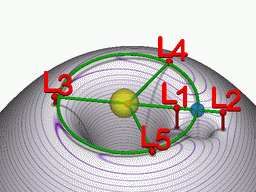
You’ll want to play a lot of Kerbal Space Program to really wrap your head around it. Sadly, your No Man’s Sky time isn’t helping you at all, except to teach you that hyperdrives are notoriously finicky and you’ll never have enough inventory space.
L3 is located on the direct opposite side of the system. Again, the forces of gravity between the two masses balance out so that the third object maintains the same orbital velocity. For example, a satellite in the L3 point would always remain exactly hidden by the Sun.
Hold on, hold on, I know there are a million thoughts going through your brain right now, but bear with me.
There are two more points, the L4 and L5 points. These are located ahead and behind the lower mass object in orbit. You form an equilateral triangle between the two masses, and the third point of the triangle is the L4 point, flip the triangle upside down and there’s L5.
Now, it’s important to note that the first 3 Lagrange points are gravitationally unstable. Any satellite positioned there will eventually drift away from stability. So they need some kind of thrusters to maintain this position.
Imagine a tall smooth mountain, with a sharp peak. Put a bowling ball at the very top and you’re not going to need a lot of energy to keep it in that location. But the blowing wind will eventually knock it out of place, and down the mountain. That’s L1, L2 and L3, and it’s why we don’t see any natural objects located in those places.
But L4 and L5 are actually stable. It’s the opposite situation, a deep valley where a bowling ball will tend to fall down into. And we find asteroids in the natural L4 and L5 positions in the larger planets, like Jupiter. These are the Trojan asteroids, trapped in these natural gravity wells though the gravitational interaction of Jupiter and the Sun.

So what can we use Lagrange points for? There are all kinds of space exploration applications, and there are already a handful of satellites in the various Earth-Sun and Earth-Moon points.
Sun-Earth L1 is a great place to station a solar telescope, where it’s a little closer to the Sun, but can always communicate with us back on Earth.
The James Webb Space Telescope is destined for Sun-Earth L2, located about 1.5 million km from Earth. From here, the bright Sun, Earth and Moon are huddled up in a tiny location in the sky, leaving the rest of the Universe free for observation.

Earth-Moon L1 is a perfect place to put a lunar refueling station, a place that can get to either the Earth or the Moon with minimal fuel.
Perhaps the most science fictiony idea is to put huge rotating O’Neill Cylinder space stations at the L4 and L5 points. They’d be perfectly stable in orbit, and relatively easy to get to. They’d be the perfect places to begin the colonization of the Solar System.
Thanks gravity. Thanks for interacting in all the strange ways that you do, and creating these stepping stones that we can use as we reach up and out from our planet to become a true Solar System spanning civilization.
The Bigelow Expandable Module Is About To Blow Up

Update:
The Bigelow Expandable Activity Module did not fully expand today, May 26th, as planned. Engineers are meeting to try to understand why the module didn’t fully expand. They are evaluating data from the expansion to determine what has happened. If the data says its okay to resume expansion, that could happen as early as tomorrow, May 27th.
A previously scheduled teleconference has been postponed, and NASA will update when a decision on expansion is made.
People who aren’t particularly enthusiastic about space science and space exploration often accuse those of us who are, of “living in a bubble.” There are so many seemingly intractable problems here on Earth, so they say, that it’s foolish to spend so much money and time on space exploration. But if all goes well with the Bigelow Expandable Activity Module (BEAM) at the ISS this week, astronauts may well end up living in a sort of bubble.
Expandable, inflatable habitats could bring about a quiet revolution in space exploration, and the BEAM is leading that revolution. Because it’s much more compact and much lighter than rigid steel and aluminum structures, the cost of building them and launching them into space is much lower. The benefits of lower costs for building them and launching them are obvious.
NASA first announced plans to test the BEAM back in 2013. They awarded a $17.8 million contract to Bigelow Aerospace to provide the expandable module, with the idea of testing it for a two-year period.
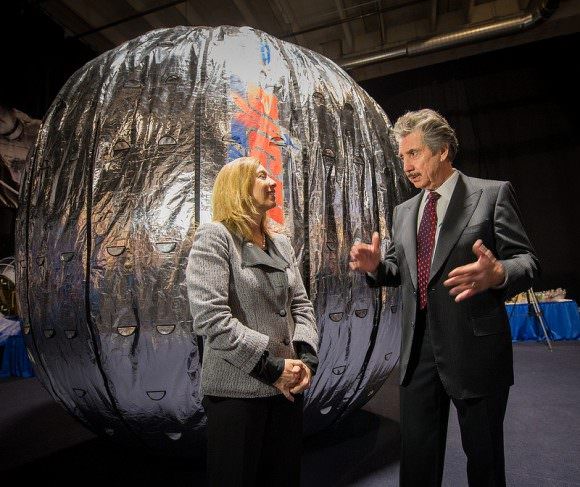
When the contract was announced, NASA Deputy Administrator Lori Garver said, “The International Space Station is a unique laboratory that enables important discoveries that benefit humanity and vastly increase understanding of how humans can live and work in space for long periods. This partnership agreement for the use of expandable habitats represents a step forward in cutting-edge technology that can allow humans to thrive in space safely and affordably, and heralds important progress in U.S. commercial space innovation.”
Though no astronauts will be living in the module, it will be tested to see how it withstands the rigours of space. ISS astronauts will enter the module periodically, but for the most part, the module will be monitored remotely. Of particular interest to NASA is the module’s ability to withstand solar radiation, debris impact, and temperature extremes.
The BEAM was launched in April aboard a SpaceX Dragon Capsule, itself carried aloft by a SpaceX Falcon rocket. Personnel aboard the ISS used the station’s robotic arm to unpack the BEAM and attach it to the station. That procedure went well, and now the BEAM is ready for inflation.
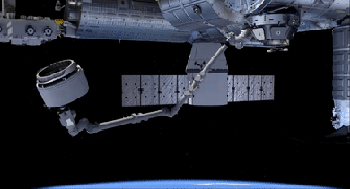
How exactly the BEAM will behave while it’s being inflated is uncertain. The procedure will be done slowly and methodically, with the team exercising great caution during inflation.
Once inflated, the BEAM will expand to almost five times its travelling size. While packed inside the Dragon capsule, the module is 8 ft. in diameter by 7 ft. in length. After inflation, it will measure 10 ft. in diameter and 13 ft. in length, and provide 16 cubic meters (565 cubic ft.) of habitable volume. That’s about as large as a bedroom.
After inflation, the BEAM will sit for about a week before any astronauts enter it. After that, the plan is to visit the module 2 or 3 times per year to check conditions inside. During those visits, astronauts will also get sensor data from equipment inside the BEAM.
Some, including Bigelow CEO Robert Bigelow, are hopeful that after the first six months or so, the timeline can be accelerated a little. If NASA approves it, the BEAM could be used for science experiments at that time.
As for Bigelow itself, they are already working on the B330, a much larger expandable habitat that promises even greater impact durability and radiation protection than the BEAM. Bigelow hopes that the B330 could be used on the surface of the Moon and Mars, as well as in orbit.
The BEAM will never attract the attention that rocket launches and Mars rovers do. But their impact on space exploration will be hard to deny. And when naysayers accuse us of living in a bubble, we can smile and say, “We’re working on it.”
Inflatable Space Habitat To Be Tested On The ISS
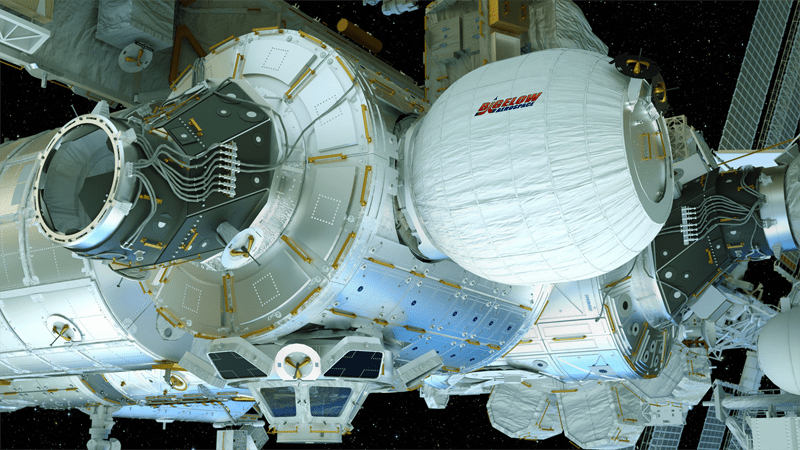
Space habitats have long been an object of fascination for thinkers, dreamers, and engineers. Science fiction is littered with space habitats, whether in books or movies. And their designs have ranged from titanic, uber-engineered types to fanciful, organic types.
Bigelow Aerospace is one company that is focused on creating affordable, practical space habitats. Inflatability is the name of the game for Bigelow, and now, one of their habitat modules is going to be tested on the ISS for a 2-year period. The BEAM, or Bigelow Expandable Activity Module, will be launched aboard a SpaceX Dragon on Friday April 8th, for a 2-day journey to the ISS.
The BEAM travels as an 8 foot bundle, but once it’s attached to the ISS, and inflated by astronauts, it will be large enough to hold a car. However, astronauts won’t be living inside it; rather, the BEAM will be tested for 2 years to see how it holds up. The objectives for this 2 year mission include:
- Demonstrating launch and deployment, as well as folding and packing techniques.
- Determining radiation protection capability.
- Demonstrating design performance such as thermal, structural, mechanical durability, long-term leak performance, etc.
- Increasing Technology Readiness Level (TRL) of expandable habitat technology
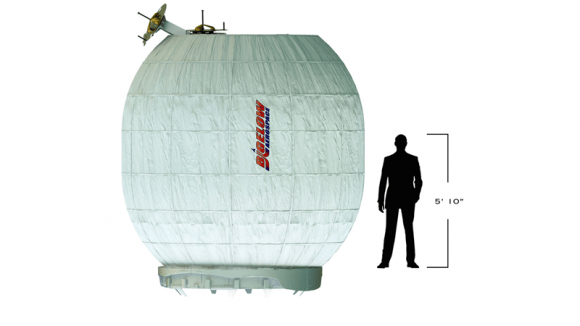
“The International Space Station is a uniquely suited test bed to demonstrate innovative exploration technologies like the BEAM,” said William Gerstenmaier, associate administrator for human exploration and operations at NASA Headquarters in Washington. “As we venture deeper into space on the path to Mars, habitats that allow for long-duration stays in space will be a critical capability. Using the station’s resources, we’ll learn how humans can work effectively with this technology in space, as we continue to advance our understanding in all aspects for long-duration spaceflight aboard the orbiting laboratory.”
The obvious risk to an inflatable space habitat is puncturing; not only from meteoroids, but from the growing population of space junk that inhabits Earth’s orbit. But BEAM is designed with this hazard in mind. It’s a thick-walled design, made from multiple layers of fabric similar to Kevlar. As far as space junk goes, BEAM should be impenetrable.
The BEAM is just a test module. It will hold only monitoring equipment, and will be entered by astronauts retrieving data and performing inspections. Bigelow Aerospace’s design for a usable habitat is the B330, a module large enough for 6 occupants, with a projected lifespan of 20 years. Test results from BEAM’s 2 years in space will help refine the design of the B330.
After its 2 years are up, BEAM will be released from the ISS and will be destroyed when it enters Earth’s atmosphere.



